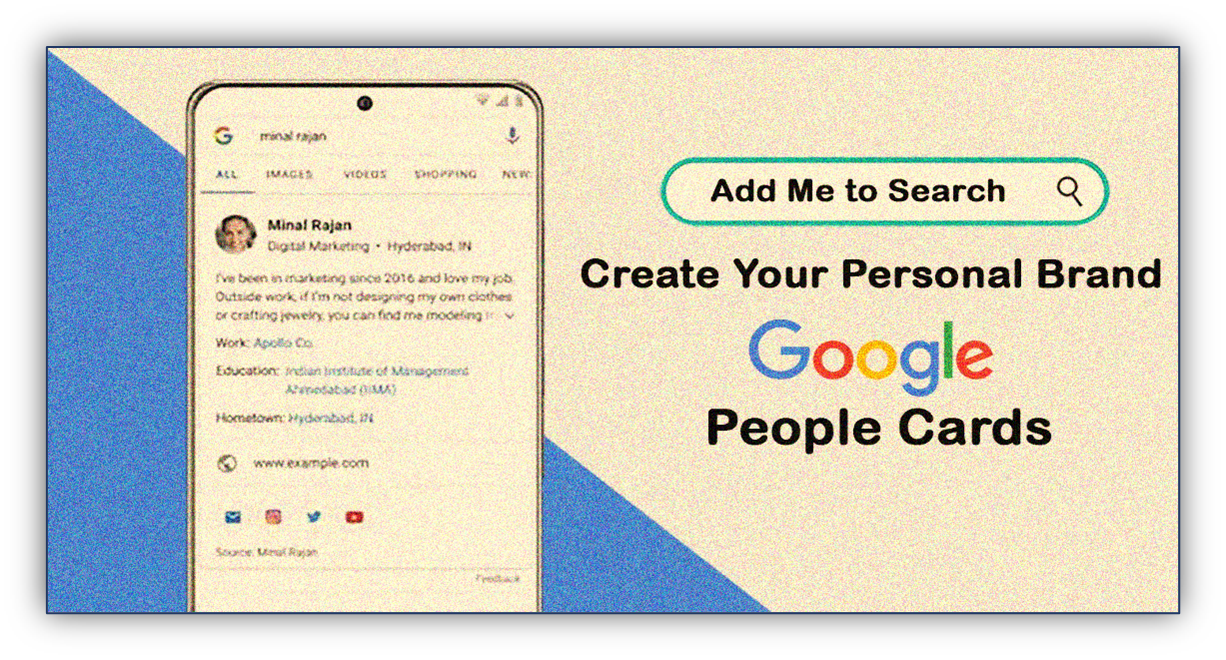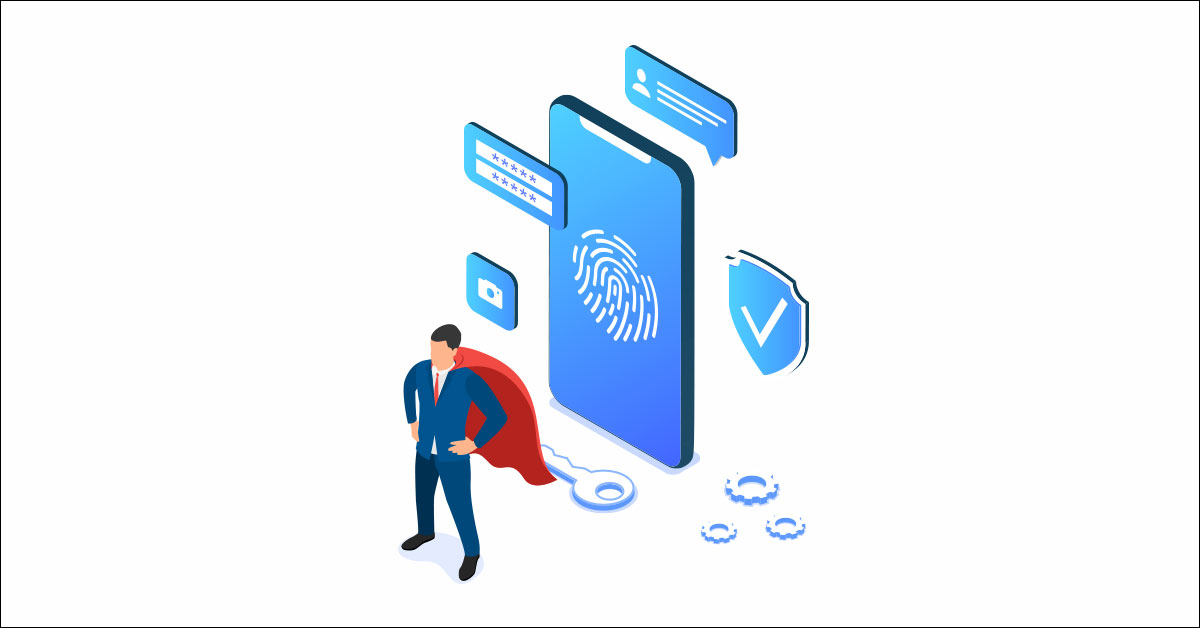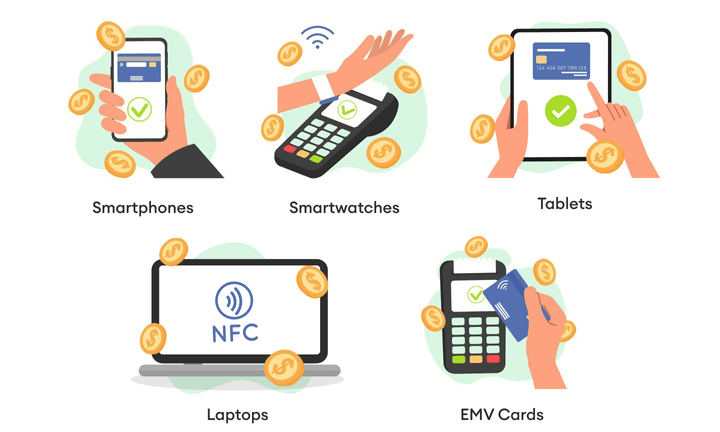- August 6, 2023
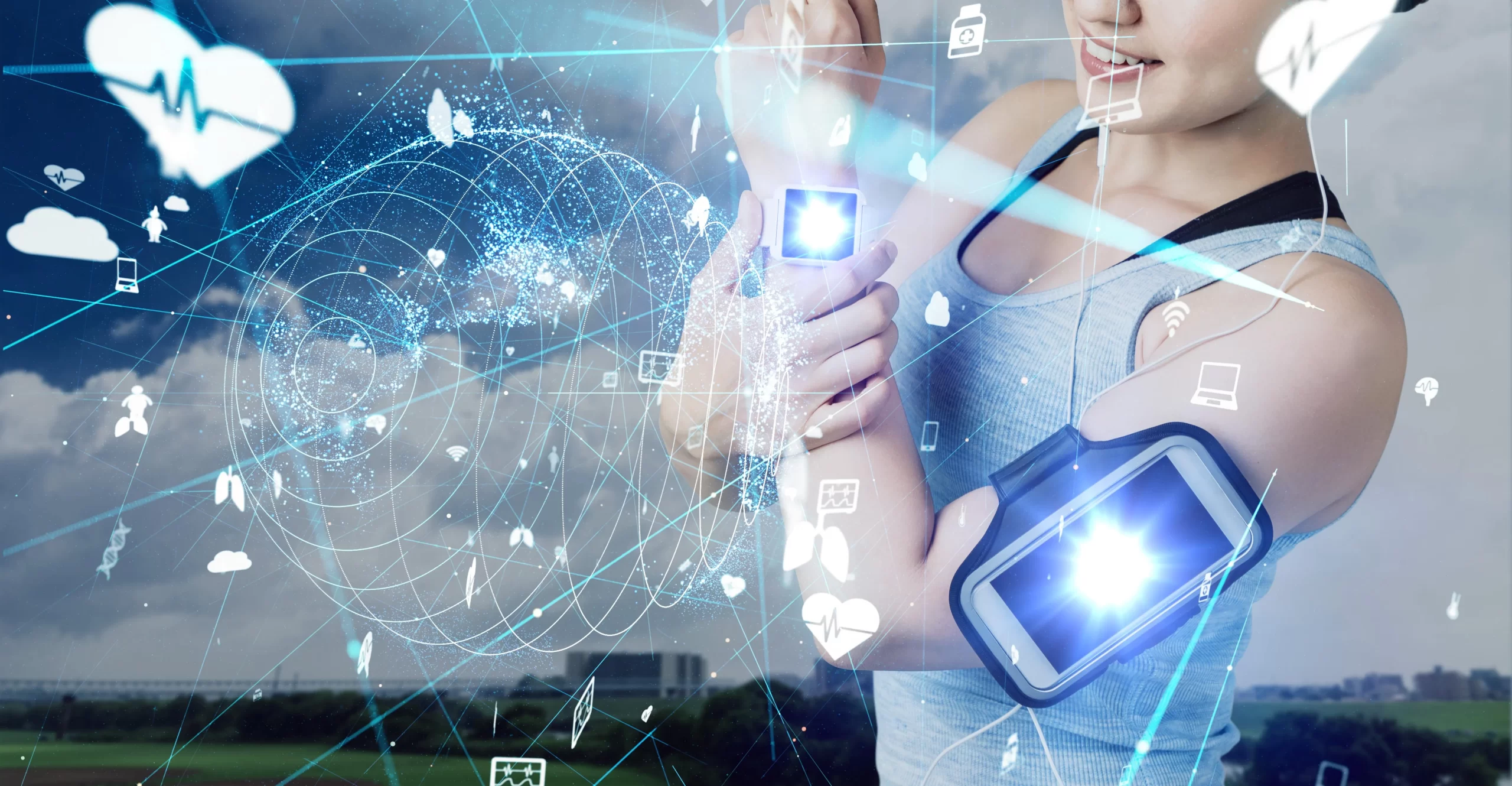
Smart technology like computers, tablets, smartphones, and wearables have increased our dependence on them. A few decades ago, the size of computers limited their potential; nevertheless, ongoing technological advancements today allow us to wear cutting-edge technology and utilise it to improve productivity and quality of life. Numerous new opportunities have been created by the newest technologies. Popular wearables like the Apple Watch, Fitbit, Pebble, and Google Glass have inspired developers to make their own wearable devices due to this technology’s potential to alter the playing field in a number of sectors, including banking, tourism, fashion, music, gaming, and education. Many are presently investigating its potential and applicability, particularly in the realm of health and wellness. The integration of cutting-edge technology and the emergence of innovative fitness app development services further contribute to the evolution of wearables, making them powerful tools for promoting a healthy and active lifestyle.
Building mobile apps for wearable devices is not simple. Developers of wearable technology apps have challenges that directly affect how effective the wearable apps become. There are multiple challenges to overcome, including multiple user interfaces and security issues.
Importance of Wearable Mobile Apps
it is a technology that you wear on your body parts or clothing, connected to the internet through smartphones, computers and tablets. Wearables Apps have access to the device’s hardware, which includes sensors, receivers, and other components. They gather data from hardware and, with the help of the network to which they are connected. Then they use it further to generate the outcome they want. The output is usually provided or shown by the device itself.
Overview of challenges that mostly faced it while developing the app. Below is the list of challenges:
- Battery issues
- User interface
- Privacy and security
- Functionality
- Regular updates
- Multi-platform support
- Tethered devices
Benefits of Wearables for Different Industries
Wearable Devices in Healthcare
The usage of wireless medical sensors is not wholly new in the medical industry, as is well recognized. In practice, there are several ways that sensors have been employed in healthcare for a long time. The sensors are almost everywhere and measure everything from body measurements to sleep quality, heart rates respiratory functions, and more. All of a person’s health-related data is stored in a community that they engage with one another to form. As a result, patients and the healthcare workers who provide for them have more control over their medical situations. It can be satisfying enough to get feedback, acknowledgment, and reminders about one’s fitness and health goals, especially with the integration of advanced healthcare app development services that enhance the overall user experience and engagement in personal well-being.
Wearable technology keeps improving with the capacity to monitor physical activity, monitor sleep quality, and collect health data like heart rate or blood oxygen level. Nowadays, there are a lot more options than just recording steps. There are many wearable devices such as wearable fitness tracker, smart health watches and body-mounted sensors to monitor health. These devices have become popular and captured a broad audience over the period of time.
Wearable Gaming Technology
One of the things that got a lot of attention recently is wearable gaming technology. With the first prototypes of modern VR headsets, everything started long ago. Virtual reality headsets are currently one of the most well-liked categories of wearable technology in the gaming business. Wearable haptic technology is the best option for the task since, as was already noted, users want their gaming experiences to improve with each new game release.
- Virtual reality wearables: In the gaming business, virtual reality headsets were one of the sorts of wearables. With the use of VR gaming equipment and eyewear, users may fully immerse themselves in the game. Because of this, gamers’ headgear has been the most important piece of VR gaming equipment up to this point. These wearable VR gaming devices come at a variety of price points, from basic VR goggles that display the simulated 3D game scene to sophisticated motion-control VR headsets that can record and transmit the full range of the user’s head and eye motions.
- Haptic device: The haptics field of research is used in games to encourage touch. Haptics have been used in video game controllers for almost 20 years, but the next attainable goal is to apply this technology to wearable devices.
Games can be made more realistic by using haptic vests, gloves, or suits. Haptic actuators are incredibly thin and small, allowing for exciting digital interactions and new, realistic physical experiences. We should expect haptics to become more practical across a variety of gaming wearable devices as technology improves.
Wearables in Fashion
Smart fashion now includes smart clothing and accessories that blend aesthetics and style with modern technology. Wearables are already being utilized in the fashion business in a variety of ways. Your smart accessories, for instance, can change color to match any outfit you’re wearing, your smart bag can charge other USB devices like your phone, and your purse can switch on internal lights as you open it.
Also Read: Role Of Artificial Intelligence In Wearable Mobile App Development
Challenges During Wearable App Development
1- Building the Use Case
What, when, and why are the three essential problems that every developer must solve. After addressing these three W’s, the concept and design process will be easy to start.
2- Right Platform and API selection
Another difficulty in creating wearable apps is creating one for each platform or for all of them. In addition, a variety of technologies and APIs are available, including those from Apple, Salesforce, and Android. Therefore, it’s critical to select the appropriate platform based on the requirements.
3- User Interface
A new user interface is required. Therefore, creating a wearable application’s user experience (UX) is a challenging task for developers. During the process, a number of factors must be considered, such as display size variations icon compatibility and size, platform support, and a number of other features.
4- Privacy and Data Security
Since wearable technology is still in its beginnings, security issues are to be expected. Wearable tech products need various synchronization or third-party tools or features to connect with mobile apps on Internet-enabled devices because they are unable to connect to the Internet on their own. Many wearable apps have data privacy breaches every single day.
5- Tethering
Due to their limited functionality and small screens, wearables are typically connected devices rather than separate electronics. They cannot access all of an application’s features without using other, larger devices. They, therefore, become almost worthless if the tablets or smartphones to which they are connected have a low battery or simply stop working.
6- Features and Functionality
Every Wearable app’s main objective and greatest hurdle is “ease of use and mobility”. developers should make sure that the functionality of wearable technology is simple for beginners to utilize.
Future Trends in Wearable Mobile App Development
The future of wearable technology will include both achievements and failures. The design of wearable technology will probably be as simple as that of cell phones when they first gained popularity. As wearable technology becomes less obvious, it will grow in popularity, with the appearance becoming either simple or elegant like clothing or jewelry. In this evolving landscape, the focus on energy harvesting and medical wearables suggests a growing need for innovative wearable app development services to cater to the changing demands and functionalities of these devices.
- Energy harvesting: The battery life of wearable technology has also improved. Taking to remove your watch to charge it is annoying. These devices, which generate electricity from body heat, motion, or solar energy, could be the future of energy harvesting.
- Medical Wearables: The market for medical devices that record biometrics in real-time is already huge. There is a strong possibility that wearable technology will keep developing new ways to track our health. Companies are already looking into diagnostic wearables that can track, identify, and provide treatments like insulin. Other companies are researching how to put sensors under the skin to check blood oxygen levels and monitor important signs. For those suffering from ongoing illnesses, this would be significantly beneficial.
- August 6, 2023
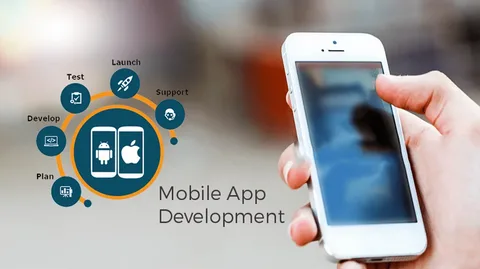
Businesses are continuously looking for novel methods to distinguish out and prosper in Dubai’s fast-paced digital ecosystem. The creation of bespoke mobile apps has become a potent instrument with many advantages that may transform how companies function and interact with their clients. In this thorough tutorial, we examine the numerous benefits of developing bespoke mobile apps and their enormous influence on Dubai’s corporate sector.
The process of developing custom mobile apps that meet the particular demands and specifications of a particular organization is known as custom mobile app development. Custom applications, as opposed to pre-made ones, are painstakingly created and aligned with the objectives, branding, and user preferences of the company. This customized strategy guarantees that the software runs without a hitch and gives consumers a totally unique experience.
Significance in the Dubai Business Landscape
Dubai, a powerhouse for international commerce, is a haven for creativity and cutting-edge technology. By empowering companies to embrace digital change and provide cutting-edge solutions to their customers, custom mobile app development plays a crucial part in this environment. The city’s diverse market demands personalized experiences, making custom apps a necessity for companies aiming to make a lasting impact.
Enhanced User Experience
The ability of bespoke mobile applications to adapt to the individual interests of the target audience is one of their most notable benefits. Businesses may develop applications that resonate with their users and increase engagement and happiness by using user feedback and behavior analysis.
Intuitive and User-Friendly Interfaces
The potential to create user-friendly and intuitive interfaces is offered by custom applications. An interface that is well-designed improves usability and lowers the learning curve for users, creating a smooth and engaging experience. As a result, repeat business and consumer loyalty are promoted.
Competitive Advantage
In Dubai’s bustling business environment, differentiation is key to survival. Custom mobile apps allow businesses to differentiate themselves by offering unique features, functionalities, and a level of personalization that is hard to achieve with generic applications. This distinctive edge can significantly impact a business’s visibility and customer acquisition.
Unique Features and Functionalities
Custom app development empowers businesses to innovate and introduce features that directly address the pain points of their customers. Whether it’s a specialized booking system for a luxury hotel or an interactive 3D product showcase for an e-commerce platform, these unique functionalities set businesses apart and create memorable user experiences.
Personalized Marketing and Engagement
Custom mobile apps enable precise targeting of promotions and notifications. Businesses can deliver tailored content to users based on their preferences and behaviors, resulting in higher conversion rates and more effective marketing campaigns.
Connecting with Customers on a Personal Level
Personalized engagement is a cornerstone of successful business-customer relationships. Custom apps allow companies to connect with their customers on a deeper level by providing personalized recommendations, relevant content, and interactive features that resonate with individual users.
Streamlined Business Operations
Custom apps can streamline and automate various business processes, reducing manual effort and minimizing errors. From inventory management to order processing, automation enhances efficiency and frees up valuable resources for strategic initiatives.
Improved Efficiency and Productivity
By integrating seamlessly with existing workflows and systems, custom mobile apps can boost overall efficiency and productivity. Employees can access real-time information, collaborate effortlessly, and perform tasks efficiently, leading to faster decision-making and smoother operations.
Integration of Advanced Technologies
The user experience may be improved to previously unheard-of heights by the use of cutting-edge technology like artificial intelligence (AI), augmented reality (AR), and virtual reality (VR). AI-powered recommendations, immersive AR product try-ons, and interactive VR simulations are just a few examples of how businesses can captivate their audience and foster engagement.
Elevating User Interactions
Custom apps equipped with cutting-edge technologies provide innovative ways for users to interact with the business. Whether it’s a virtual showroom, an AI-driven chatbot for customer support, or gamified elements that encourage user participation, these interactions create memorable and impactful moments.
Data-Driven Insights
Custom mobile apps gather important user information that can offer useful insights into user preferences, trends, and behaviour. Businesses may use this information to guide choices, hone their tactics, and constantly enhance the functionality of the app.
Informed Decision-Making
Businesses may base their strategic choices on factual information rather of assumptions thanks to data-driven insights. Better product offers, more effective marketing efforts, and better customer experiences might all emerge from this data-driven strategy.
Scalability and Flexibility
As businesses evolve and grow, their requirements change. Custom mobile apps are designed with scalability in mind, allowing for seamless integration of new features and functionalities as the business expands, without compromising on performance or user experience.
Easy Integration of New Features
Unlike off-the-shelf apps that may have limitations in terms of customization, custom apps offer the flexibility to integrate new features and updates as technology evolves. Due to its versatility, the app can stay current and competitive in a digital environment that is undergoing fast change.
Security and Confidentiality
Custom mobile apps provide a higher level of security compared to generic applications. Businesses can implement robust security measures tailored to their specific needs, mitigating the risks of data breaches and unauthorized access.
Ensuring Customer Trust
In an era where data privacy is paramount, custom apps help build and maintain customer trust. The implementation of stringent security protocols and transparent data handling practices reassures users that their sensitive information is in safe hands.
Cost Efficiency and ROI
Long-Term Savings Compared to Off-the-Shelf Apps
While the initial investment in custom app development may be higher, the long-term cost savings are significant. Generic apps often require ongoing licensing fees and may not fully align with a business’s needs, making custom apps a more cost-effective choice over time.
Calculating and Maximizing Return on Investment
Custom apps offer a greater potential return on investment (ROI) since they may add value in unique ways. Businesses may more effectively track and optimize their return on investment (ROI), whether it comes from higher revenue, more effective operations, or more devoted customers.
Collaboration and Communication
Custom mobile apps aren’t just limited to customer-facing interactions. They can also facilitate internal communication and collaboration among employees. An internal app can serve as a hub for information sharing, task management, and team collaboration, enhancing overall efficiency.
Seamless Communication Channels
Efficient communication is crucial for any business’s success. Custom apps can integrate seamless communication channels, such as in-app messaging and real-time notifications, enabling businesses to stay connected with their customers and respond promptly to inquiries.
Customization for Dubai Market Trends
Dubai’s unique market demands require a tailored approach. Custom mobile apps can address specific local preferences, cultural nuances, and market latest trends and challenges, resonating more effectively with the city’s diverse and discerning audience.
Cultural and Market Relevance
Custom apps that embrace Dubai’s cultural diversity and align with its dynamic market trends are more likely to resonate with users. By incorporating elements that reflect the city’s identity, businesses can forge stronger connections and foster brand loyalty.
Case Studies: Successful Mobile App Implementations in Dubai
Real-world case studies highlight the tangible benefits of custom mobile app development in Dubai. These success stories illustrate how businesses across various industries have leveraged custom apps to achieve specific goals, enhance user experiences, and drive growth.
Highlighting Positive Outcomes
From increased customer engagement to streamlined operations, case studies provide concrete evidence of the positive outcomes that custom mobile apps can deliver. These success stories serve as inspiration for other businesses looking to harness the power of custom app development.
Choosing the Right App Development Partner
Selecting the right app development partner is crucial for the success of a custom app project. The collaboration of companies with respectable organizations that have a track record of providing high-quality, creative solutions is ensured through thorough research and due diligence.
Factors to Consider in the Decision-Making Process
When choosing an app development partner, it is important to carefully consider each of the following factors: expertise, industry experience, client testimonials, and technological prowess. A wise choice may provide the groundwork for an effective and rewarding cooperation.
Development Process Breakdown
The custom app development process typically involves several key stages, including ideation, design, development, testing, and deployment. Each stage is meticulously executed to ensure that the final app meets the business’s objectives and user expectations.
Timelines and Milestones
Clear timelines and milestones are established to keep the app development process on track. Regular updates and progress reports from the app development partner provide transparency and enable businesses to monitor the project’s advancement.
Budgeting and Cost Factors
Budgeting for custom app development requires a comprehensive understanding of the project’s scope and requirements. A detailed breakdown of costs, including the design of app, development, testing, and post-launch support, helps businesses allocate resources effectively.
Factors Influencing Development Costs
Several factors influence the overall development costs, including the complexity of features, integration of advanced technologies, app platform (iOS, Android, or both), and the level of customization. Careful consideration of these factors ensures an accurate budget estimate. When embarking on an app development project in Dubai, partnering with a reputable iOS app development company in Dubai can further streamline the process and provide expertise tailored to the unique demands of the market.
Post-Launch Support and Maintenance
The journey doesn’t end with the app’s launch. Post-launch support and maintenance are critical for ensuring app functionality, addressing any bugs or issues, and providing timely updates to adapt to evolving user needs and technological advancements.
Handling User Feedback and Bug Fixes
User feedback plays a vital role in shaping the app’s ongoing development. Custom app development partners actively gather and address user feedback, implementing bug fixes and improvements to enhance the user experience.
Success Metrics and Analytics
The performance and effect of the app are measured using key performance indicators (KPIs). User engagement, retention, conversion, and satisfaction metrics offer important insights into the app’s efficacy and potential development areas.
Future Trends in Mobile App Development
The field of developing successful mobile apps is changing as fast as technology. Staying ahead of the curve requires making predictions about future developments. We predict that AI and machine learning will continue to be integrated, that user privacy will receive more attention, and that new interaction paradigms will develop.
Preparing for Future Innovations
Businesses that embrace custom mobile app development position themselves to leverage future innovations. By staying adaptable and open to technological advancements, companies can continue to provide cutting-edge solutions that meet the evolving needs of their customers.
Conclusion
The benefits of custom mobile app development are undeniable, particularly in the dynamic business environment of Dubai. From enhanced user experiences and personalized marketing to streamlined operations and integration of advanced technologies, custom apps empower businesses to thrive and succeed in a competitive landscape.
To unleash the full potential of custom mobile apps in Dubai, businesses must carefully consider their goals, partner with reputable development agency, and embrace ongoing innovation. By doing this, they may develop digital products that not only address today’s demands but also open the door to a bright future.
Custom mobile app development becomes a strategic necessity in the dynamic commercial environment of Dubai. The advantages span across enhanced user experiences, competitive differentiation, personalized marketing, streamlined operations, and integration of advanced technologies. Businesses that recognize the transformative potential of custom apps position themselves to excel in Dubai’s dynamic market. By embracing innovation, collaboration, and a user-centric approach, these businesses can secure their foothold in the digital realm and create lasting connections with their customers.
- August 5, 2023
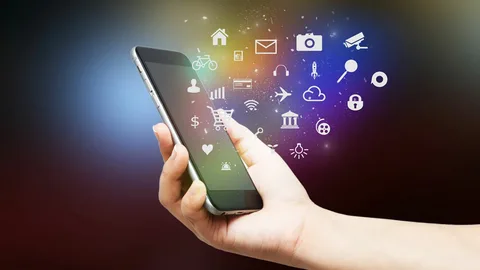
Mobile applications have evolved into essential tools for altering organizations throughout the globe in the constantly changing digital ecosystem. Being a vibrant and active center of innovation, Dubai has enthusiastically adopted mobile apps to transform the consumer experience. In this in-depth essay, we will examine the wide-ranging effects of mobile applications on firms’ digital transformation with an emphasis on how they are altering and revolutionizing Dubai’s customer experience environment.
Role of Mobile Apps in the Digital Transformation Landscape
The strength of mobile applications is the driving force behind the digital transformation. The success of Dubai mobile app development in the digital age is greatly facilitated by these applications. Companies may restructure their operations, interact with clients in novel ways, and open up previously unheard-of prospects for development and expansion by utilizing mobile applications.
Accelerating Productivity, Growth, and ROI for Businesses
Mobile apps are essential for boosting efficiency, driving development, and maximizing return on investment (ROI) in Dubai’s hectic and cutthroat corporate climate. Mobile applications enable organizations to increase levels of productivity and efficiency by simplifying internal procedures, automating operations, and enhancing workflows. Additionally, these apps facilitate reaching a broader customer base, extending market presence, and fueling unprecedented growth and success.
Reinventing the Entire Business Model: People, Processes, and Technology
The digital transformation journey in Dubai goes beyond incremental changes; it involves a complete reinvention of traditional business models. Mobile apps serve as transformative catalysts that seamlessly integrate people, processes, and technology. By facilitating real-time communication and collaboration with customers, suppliers, and employees, mobile apps in Dubai drive innovation and create agile and adaptive businesses.
Benefits of Mobile Apps for Businesses
Mobile apps empower businesses with personalized customer interactions, driving loyalty. By streamlining operations through efficient task management and data analysis, they pave the way for growth and success in a competitive landscape. Here are the benefits of integrating mobile apps into your business strategy.
Enhancing Customer Experience through Personalized Engagement
One of the most significant advantages of mobile apps is their ability to provide personalized customer experiences. By analyzing user data and behaviors, mobile apps deliver tailored content, recommendations, and offers, making interactions more meaningful and engaging. This personal touch fosters a sense of loyalty and drives customer satisfaction to new heights.
Connecting with Customers Anytime, Anywhere through Enterprise Mobility
Mobile apps break the barriers of time and location, mobile apps in Dubai enable businesses to maintain direct and instant communication with their customers. Enterprise mobility empowers customers to access services, support, and information anytime, anywhere, fostering strong and lasting relationships between businesses and their clientele.
Enhancing Business and Staff Efficiency
Mobile apps optimize various business processes, eliminating bottlenecks, and enhancing operational efficiency. By digitizing workflows and providing on-the-go access to critical information, employees can stay productive regardless of their physical location, resulting in quicker response times and smoother operations.
Enabling Remote Working and On-the-Go Access to Information
In today’s rapidly evolving business landscape, remote work has become more prevalent than ever. Mobile apps empower employees to work remotely while ensuring seamless access to essential resources and data. This newfound flexibility enhances work-life balance and empowers the workforce to stay productive even outside traditional office settings. For businesses based in Dubai seeking to harness the potential of remote work, collaborating with a leading iOS app development company in Dubai can be instrumental in creating customized and efficient mobile solutions that align with the unique needs of the market.
Cost-Effective and Convenient Connectivity
Mobile apps offer businesses a cost-effective alternative to traditional communication channels, such as phone calls and physical mail. By reducing communication costs, businesses can allocate resources more efficiently, maximizing their overall effectiveness.
Faster Loading Time and Offline Accessibility
Mobile apps provide faster loading times compared to mobile websites, resulting in enhanced user experience and reduced bounce rates. Moreover, many mobile apps offer offline accessibility, ensuring uninterrupted access to critical features and functionalities, even in areas with poor internet connectivity.
Mobile Apps in Creating Brand Awareness and Recognition
In Dubai’s highly competitive business landscape, standing out from the crowd is paramount to success. With unique and visually appealing Mobile apps designs capture users’ attention, effectively differentiating businesses from their competitors.
Keeping Customers Informed about New Products/Services through Notifications
Mobile apps enable businesses to establish direct communication channels with their customers through push notifications. By keeping users informed about new products, services, or promotions, businesses can foster engagement, drive customer loyalty, and maximize conversion rates.
Engaging with Customers through Personalized Messages and Chatbots
Mobile apps facilitate personalized interactions with customers through messaging and chatbot features. These personalized engagements create a sense of connection and trust, enhancing brand loyalty and encouraging repeat business.
Collecting Customer Data for Market Analysis and Targeting Strategies
Mobile apps serve as valuable data collection tools, allowing businesses to gather insights into customer behavior and preferences. Leveraging this data-driven approach, businesses can refine their marketing strategies and target specific customer segments with unmatched precision.
Mobile Apps as an Essential Tool for Businesses in Dubai
In Dubai’s bustling business landscape, mobile apps stand as indispensable tools for companies. They amplify customer engagement, streamline transactions, and enhance brand visibility. As an essential asset, mobile apps empower businesses in Dubai to thrive amidst modern challenges and seize lucrative opportunities, ensuring a strong foothold in the dynamic marketplace.
Improving Sales, Visibility, and Customer Loyalty
Mobile apps are instrumental in boosting sales and increasing brand visibility for businesses in Dubai. By providing a seamless and user-friendly purchasing experience, mobile apps drive conversions, resulting in improved revenue and profitability. Additionally, these apps foster strong customer loyalty, leading to repeat business and positive word-of-mouth referrals.
Differentiating from Competitors and Capturing a Larger Market Share
In the highly competitive Dubai market, embracing mobile apps gives businesses a distinctive edge. By offering unique features, personalized experiences, and unrivaled convenience, companies can attract more customers and gain a larger share of the market.
Importance of Having a Skilled Mobile App Development Partner
To create a successful mobile app, businesses require a skilled and experienced apps development partner who understands their unique requirements and preferences. A proficient development partner can craft an app tailored to the business’s objectives, ensuring optimal functionality, aesthetics, and user experience.
Establishing a Direct Relationship with Users
A competent mobile app development partner helps businesses establish direct and seamless relationships with their app users. This meaningful engagement fosters customer satisfaction and loyalty, translating into long-term success and brand advocacy.
Conclusion
Mobile apps have emerged as transformative tools reshaping the customer experience landscape in Dubai. As key enablers of digital transformation, they accelerate productivity, drive growth, and maximize ROI for businesses. Mobile apps enhance customer experiences, create brand awareness, and establish direct user relationships, fostering unparalleled success in the bustling city of Dubai.
In the rapidly evolving business market of Dubai, embracing mobile apps is not merely an option; it is an absolute necessity to stay competitive and relevant. Businesses that harness the full potential of mobile apps will undoubtedly thrive and flourish in this exciting era of digital transformation.
- August 4, 2023

It is a technology that you wear on your body parts or clothing, connected to the internet through smartphones, computers and tablets. Wearables Apps have access to the device’s hardware, which includes sensors, receivers, and other components. They gather data from hardware and, with the help of the network to which they are connected. Then they use it further to generate the outcome they want. The output is usually provided or shown by the device itself.
Lately, there have been problems involving data leaks, such as the fact that Fitbit is open to takeover by other parties while connected to an internet or Bluetooth and that the network address is public. Data leaks happened with manufacturers including Xiaomi, Huawei, Jawbone, and others. Due to privacy violations that restrict the growth of their products, some of these wearable app devices have been forced to leave the market. In addition to technical factors like devices, networks, data transfer, and privacy awareness, another key factor influencing the data security and privacy protection of healthcare wearable devices is privacy awareness. Also, wearable technology can gather user information at all times, places and no matter what the circumstance is and then upload that information to the cloud, making it subject to attacks. and data leakage.
Security Considerations in Wearable Mobile App Development
1- User Authentication and Authorization
The process of verifying the users are who they say they are is known as authentication they are multiple methods to verify it such as:
- Username & passwords
- One time pin
- Biometric
Where as user authorization is the process of giving a user a permission to access a specific file, resource or function.
2- Data Encryption and Protection
There are two methods of data Encryption:
- Symmetric encryption: The sender and the receiver must both have access to the same key in order to use this method, which is also known as private-key cryptography or a secret key algorithm. Therefore, before the message can be encrypted, the recipient must possess the key.
- Asymmetric encryption: This technique, also known as public-key cryptography, encrypts data using two keys a public key and a private key that are mathematically linked. It doesn’t matter which key you chose first; the user uses one for encryption and the other for decryption.
3- Secure Communication and Network Protocols
The safety system for the Internet based on encryption is known as SSL, or Secure Sockets Layer. To provide privacy, authentication, and data integrity in Internet communications, Netscape created it for the first time in 1995. SSL is the predecessor to the modern TLS encryption used today.
Data transferred between applications over the Internet is secured end-to-end using the cryptographic protocol TLS. The padlock icon that appears in web browsers when a secure session is started makes it most familiar to consumers when used in secure web browsing. However, it can and should be used for other applications as well, including voice-over IP, file transfers, video/audio conferencing, instant messaging, and e-mail.
While accessing the internet remotely, many Wi-Fi users choose to use open networks rather than the data plans associated with their devices. However, the safety of free public WiFi is not guaranteed. If you are careless, hackers could easily access your connection and compromise sensitive data that is kept on your device and in online accounts.
Bluetooth connections to your mobile devices can be used to transmit data, connect to wireless headphones, and allow hands-free calling while you’re driving. The majority of the time, a user must approve a Bluetooth connection (also known as “pairing”) before data can be transferred, which offers some level of data protection. But if you’re not careful, Bluetooth connections, like Wi-Fi connections, could put your private information in danger.
4- Secure Code Development
There are key areas to look in for secure coding:
- Input Validation
- Output Encoding
- Authentication and Password Management
- Session Management
- Access Control
- Cryptographic Practices
- Error Handling and Logging
- Data Protection
- Communication Security
- System Configuration
- Database Security
- File Management
- Memory Management
5- Secure App Updates and Patch Management
Regular software updates and patch management are essential for avoiding cyberattacks for several of reasons, one of which is that they repair identified vulnerabilities in software. These weaknesses are frequently used by hackers to enter a company’s systems and take confidential information. Organizations may fix these flaws and make it much harder for hackers to break into their systems by regularly updating and patching their software. Also, they help in making sure a company’s computer systems are running the most recent software. Software developers frequently include new features, modifications, and security updates in new releases of their products.
Also Read: Augmented Reality And Virtual Reality In Wearable Mobile App Development
Privacy Considerations in Wearable Mobile App Development
1- Data Collection and Storage
There are a few best practices that can help users to ensure accurate and reliable data:
- Check for Accuracy and Completeness
- Use Multiple Sources
- Keep a Record of Your Sources
- Store Data Securely
The documentation is the supporting material that offers the details required to read, comprehend, recognize, and reuse data. Always have a backup strategy in place, including where and when your data will be stored there. Have multiple copies of your data on the cloud, drive and on file.
2- User Privacy Controls
Users can manage who can access their content through privacy controls. These options can be straightforward toggling between making an account public and restricted to a certain group or complex, giving users control over who can see each individual message. users should utilize privacy measures, especially when sharing sensitive personal information, many users are unaware of how public their data is or how to use all the protections available to them.
3- Data Deletion and Retention Policies
The data retention policy of an organization governs how data is stored for compliance or regulatory purposes as well as how it is disposed of after it is no longer needed. Even a straightforward data retention policy should specify the format, duration, and type of storage system or devices to be utilized for records and data.
Rapid data transfers between platforms have been made easier by cloud computing, but there is also a risk of data loss owing to external reasons like a major breakdown of the physical infrastructure or intentional or unintentional data deletion.
Also Read: Role Of Artificial Intelligence In Wearable Mobile App Development
4- Third-Party Integrations and Data Sharing
Third-party integration is the process of adding relevant external data via various APIs to an already-existing project. The use of existing components rather than writing new component code from scratch allows developers to create new solutions more quickly by utilizing third-party APIs.
Any company, sharing data with third parties can have a number of advantages, including enhancing analytics and enabling innovation. However, there are also major risks associated with it, including legal obligations, privacy violations, and data breaches.
Conclusion:
Prioritizing security and privacy concerns in the creation of wearable mobile apps is crucial as wearable technology develops and becomes more ingrained in our daily lives. Developers may guarantee that user data is safeguarded and consumers can have a safe and secure experience with their wearable devices by installing strong security mechanisms, adopting a privacy-by-design approach, and doing exhaustive testing and auditing.
For developers to keep on top of the most recent security risks and privacy laws in the rapidly changing world of wearable technology. Developers may foster user confidence, safeguard sensitive personal data, and contribute to the continuous growth of wearable technology in a secure and responsible way by proactively addressing security and privacy concerns.
- August 4, 2023
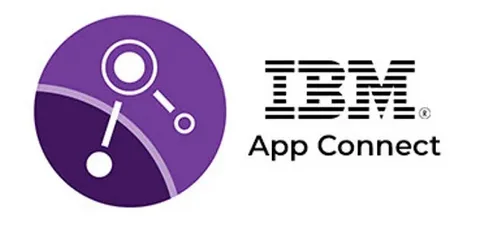
Simplified data integration has become essential for corporate success in today’s fast-paced, networked business environment. The effective and smooth interchange of data between various systems and apps is crucial as businesses work to improve customer experiences, streamline processes, and spur innovation. This thorough manual presents IBM App Connect Enterprise, a cutting-edge tool that will transform data integration for businesses.
Data is the lifeblood of enterprises in the digital age. The ability to make informed decisions, increase operational efficiency, and provide clients with personalized experiences is made possible through efficient data integration. However, maintaining continuous data flow is frequently difficult due to the complexity of current IT infrastructures, which include several applications, systems, and data sources. Herein lies the role of IBM App Connect Enterprise.
Introducing IBM App Connect Enterprise
IBM App Connect Enterprise is a sophisticated integration platform that empowers enterprises to connect and integrate diverse applications and data sources seamlessly. With its robust capabilities, App Connect Enterprise addresses data integration challenges by providing a unified and efficient solution. It enables organizations to streamline their processes, enhance collaboration, and drive innovation through a comprehensive set of integration tools and features.
Defining Enterprise Integration and Its Significance
To guarantee efficient data flow and communication inside an organization, various systems, applications, and data sources are connected through the process of enterprise integration. It entails building an ecosystem that is coherent and linked, removing data silos, and enabling real-time information interchange. Improved operational effectiveness, quicker decision-making, and a comprehensive understanding of the organization’s data environment are all benefits of a well-implemented integration plan.
Key Elements of Enterprise Integration
Successful enterprise integration involves several key elements, including data mapping, transformation, routing, and orchestration. Data mapping ensures that information is correctly matched and transferred between various systems. Transformation involves converting data from one format to another, enabling seamless communication between disparate applications. Routing directs data to its intended destination, while orchestration coordinates complex workflows and processes.
Also Read: Unleashing The Power Of Enterprise Application Development – Features, Trends & Challenges
The Role of IBM App Connect Enterprise
IBM App Connect Enterprise serves as a comprehensive integration platform that facilitates both application and data integration. It offers a range of connectors and pre-built integration patterns, allowing organizations to connect cloud-based and on-premises applications effortlessly. The platform supports various integration styles, including point-to-point, publish-subscribe, request-reply, and event-driven, catering to diverse integration needs.
How It Enhances Enterprise Integration Processes
App Connect Enterprise enhances enterprise integration by providing a user-friendly interface for designing, deploying, and managing integrations. Its intuitive visual design tools enable developers to create integration flows without extensive coding, reducing the time and effort required for implementation. The platform also offers robust monitoring and troubleshooting capabilities, ensuring the reliability and performance of integration processes.
API Management with IBM App Connect Enterprise
Application Programming Interfaces (APIs) management play a crucial role in modern data integration. They allow different software components to communicate and share data in a standardized and secure manner. App Connect Enterprise facilitates API creation, deployment, and management, enabling organizations to expose their data and services to internal teams, partners, and customers with ease.
Utilizing IBM API Management Tools
App Connect Enterprise integrates seamlessly with IBM API Connect, a comprehensive API management solution. API Connect enables organizations to create, secure, and manage APIs throughout their lifecycle. By leveraging these tools, enterprises can ensure proper governance, security, and scalability of their APIs, further enhancing data integration capabilities.
Application Integration using IBM App Connect Enterprise
Effective application integration is essential for streamlining business processes and improving overall efficiency. App Connect Enterprise enables seamless communication between different applications, regardless of their underlying technologies. Whether it’s connecting legacy systems with modern cloud applications or synchronizing data between CRM and ERP platforms, the platform’s versatility empowers enterprises to achieve a unified application landscape.
Streamlining Workflows and Modernizing Infrastructures
App Connect Enterprise goes beyond basic integration by offering advanced capabilities such as workflow automation and data enrichment. Organizations can automate repetitive tasks, trigger actions based on specific events, and enhance data quality through transformation and enrichment. This not only accelerates processes but also modernizes infrastructures, paving the way for agile and responsive operations.
Messaging and Event Streaming with IBM App Connect Enterprise
In today’s dynamic business environment, real-time data exchange is essential for making timely decisions. App Connect Enterprise facilitates messaging and event streaming, allowing organizations to achieve low-latency, high-throughput data transfer. This capability is particularly valuable for industries such as finance, where milliseconds can make a significant difference in trading and risk management.
Facilitating Secure and Reliable Data Delivery
Data security and reliability are paramount in data integration. App Connect Enterprise offers robust features for data encryption, authentication, and authorization. It ensures that sensitive information is transmitted securely between systems, reducing the risk of data breaches and unauthorized access. Moreover, the platform’s monitoring and logging capabilities provide visibility into data flows, enabling proactive issue resolution.
Real-World Applications of IBM App Connect Enterprise
Case Study: MNG Kargo’s Automated API-Based Connections
MNG Kargo, a leading logistics company, leveraged IBM App Connect Enterprise to automate its API-based connections with partner organizations. By seamlessly integrating their systems, MNG Kargo improved shipment tracking, order processing, and delivery notifications. This resulted in enhanced customer satisfaction, reduced operational costs, and accelerated business growth.
Case Study: Helsinki Regional Transport Authority’s Data Integration Initiatives
The Helsinki Regional Transport Authority utilized IBM App Connect Enterprise to streamline data integration across multiple transportation systems. By connecting ticketing, scheduling, and passenger information systems, the authority achieved optimized route planning, real-time updates, and improved passenger experiences. The efficient data exchange contributed to a more sustainable and commuter-friendly public transportation network.
Also Read: Enterprise Rent-A-Car: Transforming The Car Rental Industry Through Technology
IBM Cloud Pak for Integration: The Enterprise Integration Platform
IBM Cloud Pak for Integration extends the capabilities of App Connect Enterprise by providing a comprehensive integration platform. It offers a range of tools, services, and pre-built integrations to address complex integration scenarios. With Cloud Pak for Integration, enterprises can seamlessly connect applications, data, and services across hybrid and multicloud environments.
Features and Tools Offered for Efficient Integration
Cloud Pak for Integration includes a wide array of features, such as API lifecycle management, event-driven architecture, and AI-powered insights. It empowers organizations to build resilient and scalable integration solutions while embracing modern architectural patterns. The platform’s containerized deployment model ensures flexibility, portability, and rapid scaling to meet changing business needs.
Benefits of IBM App Connect Enterprise and Cloud Pak for Integration
The combined power of IBM App Connect Enterprise and Cloud Pak for Integration brings substantial benefits to enterprises. It streamlines data integration processes, reducing manual effort and minimizing the risk of errors. By automating data flows and enabling real-time communication, organizations can achieve faster decision-making and improved operational efficiency.
Also Read: How Can Enterprise App Development Accelerate Your Business Growth?
Enhancing Team Productivity and Revenue Opportunities
Efficient data integration frees up valuable resources and enables teams to focus on strategic initiatives. Employees may spend more time on creativity, problem-solving, and value-added tasks when procedures are simplified. Additionally, being able to quickly integrate new apps and services opens up new avenues for income generation and reduces the time it takes to launch new goods and services.
Overcoming Data Integration Challenges
In the modern business environment, organizations often find themselves dealing with intricate data landscapes comprising a mix of legacy systems, cloud-based applications, and external partners. This complexity can hinder the smooth flow of information, leading to data silos and inefficiencies. IBM App Connect Enterprise emerges as a beacon of simplification, offering a unified platform to seamlessly connect and harmonize diverse data sources.
Data Quality and Consistency
Inaccurate or inconsistent data can have profound implications for decision-making and operational efficiency. Data integration not only involves transferring data but also ensuring its quality and integrity throughout the process. IBM App Connect Enterprise provides advanced data transformation and cleansing capabilities, enabling organizations to standardize and validate data as it moves between systems. This results in reliable insights and more informed strategic choices.
Harnessing the Power of Event-Driven Integration
The capacity to react to events in real-time might be the difference between success and missed chances in the fast-paced digital environment. Event-driven integration, a hallmark of IBM App Connect Enterprise, empowers organizations to react promptly to triggers and events across the enterprise. Whether it’s a customer interaction, a market trend, or a system status update, event-driven integration ensures immediate and meaningful actions, driving agility and competitiveness.
Future-Proofing Data Integration
Technology is ever-evolving, and enterprises must ensure their data integration strategies remain adaptable to new developments. IBM App Connect Enterprise is built with scalability and future-proofing in mind. Its modular architecture and support for emerging technologies such as AI and machine learning ensure that organizations can seamlessly integrate novel tools and techniques into their data integration processes, staying ahead of the curve.
Embracing Multi-Cloud Environments
The proliferation of cloud computing has transformed the IT landscape, introducing new opportunities and complexities. IBM App Connect Enterprise is tailored to address the challenges of multi-cloud environments, allowing organizations to integrate data and applications across various cloud platforms and on-premises systems. This flexibility not only supports current business needs but also prepares enterprises for the multi-cloud reality of the future.
The Road Ahead: Continuous Improvement
Data integration is not a one-time project; it’s an ongoing journey. IBM App Connect Enterprise provides tools for continuous monitoring, analysis, and optimization of integration processes. Enterprises can gather insights into data flow patterns, identify bottlenecks, and fine-tune integration workflows for optimal performance. This iterative approach ensures that data integration remains aligned with business goals and evolving technology landscapes.
A Vibrant Ecosystem of Innovation
IBM App Connect Enterprise thrives within a vibrant ecosystem of partners, developers, and community resources. This ecosystem fosters innovation and knowledge-sharing, enabling organizations to tap into a wealth of best practices, use cases, and integration templates. With access to a supportive network, enterprises can accelerate their integration initiatives, explore new use cases, and stay informed about the latest trends and challenges in industry.
Conclusion
IBM App Connect Enterprise emerges as more than just a solution; it’s a catalyst for transformation. As organizations venture into the digital future, streamlined data integration becomes not only a necessity but a strategic advantage. By harnessing the power of IBM App Connect Enterprise, enterprises can transcend data integration challenges, unlock new opportunities, and embark on a journey of enhanced efficiency, innovation, and growth.
- August 3, 2023
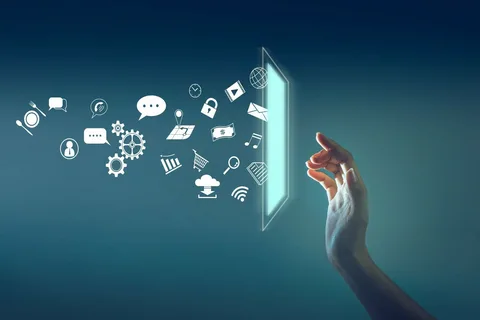
Welcome to the enchanting world of mobile app development in the dazzling city of Dubai, where innovation dances with opportunity and technology paints a vibrant future. In this captivating journey, we explore the growing significance of mobile app development and navigate the challenges faced by companies determined to soar above the rest.
In a world where digital connectivity is paramount, mobile app development has become the heartbeat of Dubai’s vibrant business landscape. Each passing day brings forth new ideas and opportunities for companies and entrepreneurs to embark on their tech-driven ventures. The mobile app has emerged as a catalyst for businesses, enabling them to interact with customers seamlessly and optimize their operations with unparalleled efficiency.
However, as the world embraces the exhilarating mobile revolution, challenges too come to play, testing the mettle of app developers and companies aiming to establish their mark. In this emotional and exhilarating journey, we delve into the intricacies of the mobile app development in Dubai, shining the spotlight on the pioneering spirit of Hoff & Mazor – the visionary architects of transformative app experiences.
Resource Restraint – Navigating the Boundless Sea
For start-ups, setting sail in the vast ocean of mobile app development can be daunting, often faced with the challenge of limited resources. It’s a heart-wrenching experience for passionate visionaries who yearn to turn their ideas into reality but find themselves confined by financial limitations. But fear not, for at Hoff & Mazor, we stand beside you as unwavering allies, guiding you through the tempestuous waters.
In this emotional journey, we understand the weight of hiring and retaining talented developers, for they are the heartbeat of every successful app. The dreamers and doers who breathe life into your ideas deserve a sanctuary where their creativity knows no bounds. We, at Hoff & Mazor, have meticulously crafted an environment where talent thrives, creating a symphony of innovation and excellence.
Security – The Guardians of Trust
As the world surges forward into a digital age, the shadows of cyber threats loom ever larger. The security of users’ data and confidential information has become the very essence of trust. Here, at Hoff & Mazor, we wear the mantle of guardians, fiercely protecting the sanctity of your users’ trust.
Every application, be it for commerce, communication, or creativity, demands its unique layer of security. Our emotional commitment to ensuring that your app embraces the highest standards of encryption stems from the understanding that trust is the bond that binds users to your creation.
Gathering and Implementation of Ideas – Nurturing the Seeds of Innovation
In the fertile realm of mobile app development, ideas are the seeds that sprout into extraordinary applications. Here at Hoff & Mazor, we caress these seeds with tender care, nurturing them into blossoming reality. We cherish the process of brainstorming, where ideas dance with possibility, and creativity flows like a river.
As your dreams take shape, we walk with you through the maze of possibilities, engaging experts in the journey of decision-making. We understand that every step is as emotional as it is strategic, and together, we chart the course that resonates with your audience’s heartstrings.
Business Model – Unraveling the Path to Prosperity
A journey without direction is like a ship lost at sea, adrift in a world of boundless opportunities. To steer your app towards prosperity, a well-defined business model becomes the North Star. At Hoff & Mazor, we believe in clarity, in the emotional serenity that comes from understanding your purpose.
Should you sell your app to the world, offering a transformative experience? Or would you be the guiding hand that crafts bespoke solutions for others? Our expertise is your guiding compass, helping you chart a course that leads to the shores of success.
Platform Appropriate – Sailing the Multitude of Seas
In a world brimming with diversity, different platforms beckon to users, each offering a unique experience. At Hoff & Mazor, we have a profound understanding of the emotional connect users have with their chosen platforms. With deft hands, we optimize your app for each one, ensuring that every user feels at home.
Compatibility becomes a dance of emotions, as we unite your app with various devices and brands. Our love for user experience and functionality transcends borders, uniting users across platforms in a harmonious symphony.
User-Friendly – The Heartbeat of User Delight
In a world where simplicity is the essence of happiness, user-friendly becomes the heartbeat of every app. At Hoff & Mazor, we infuse each line of code with love and compassion, ensuring that installation, access, and usability flow effortlessly. As your users traverse the journey, we become their silent companions, guiding them with emotional intelligence.
The ruse’s experience is etched into every pixel of your app, where intuitive design meets thoughtful interaction. We believe that the emotional connection forged between users and your app is the key to loyalty and unwavering devotion.
Memorable & Shareable – The Dance of Unforgettable Experiences
In a world where millions of apps vie for attention, becoming memorable is an emotional pursuit. Our design team weaves an emotional tapestry of visuals, branding, and storytelling to craft an experience that lingers in the hearts of users.
We understand that emotions find expression in sharing, and we encourage users to share their experiences with loved ones. By kindling the spark of emotion and incentivizing sharing, your app becomes an ever-growing story of success.
Spontaneous – Embracing the Pulse of Life
In the dance of modern life, spontaneity is the rhythm that enlivens each moment. In every line of code we write, we imbue spontaneity, designing apps for quick bursts of activity. The journey becomes a captivating whirlwind, with features that beckon users to immerse themselves in spontaneous joy.
At Hoff & Mazor, we value time as much as you do, creating an app experience that respects every heartbeat of your users’ lives.
Affordable – Empowering Dreams for All
In the symphony of mobile app development, affordability plays a poignant note. We understand that dreams deserve the wings of opportunity, and at Hoff & Mazor, we spread those wings wide. We believe that quality and affordability walk hand in hand, crafting an emotional bridge between creators and users.
Embracing alternative revenue streams like in-app purchases and advertisements, we strike the perfect chord of value and delight, giving your app an emotional connect with users from all walks of life.
Demographic Targeted – The Embrace of Understanding
Every user is a unique soul, with desires and preferences that form the tapestry of their emotions. At Hoff & Mazor, we embark on a heartfelt journey of understanding your target audience, immersing ourselves in their lives.
We adapt the app’s features and design app to cater to specific demographics, ensuring that your creation becomes an emotional companion in their daily pursuits.
Fun and Enjoyable – The Emotion of Enchantment
In the magical world of mobile app development, enchantment holds the key to hearts. Weaving a symphony of fun and enjoyment into every pixel, we create apps that captivate users and whisk them away on joyous adventures.
Incorporating gamification elements, we infuse your app with an emotional spark that ignites the spirit of playfulness within users, building an everlasting bond.
Conclusion – A Journey of Emotions
As we bid adieu to this emotional journey through the captivating world of iOS app development in Dubai, we leave you with a profound understanding – emotions are the essence of every successful app.
At Hoff & Mazor, we do not merely create apps; we craft emotional experiences that resonate with users, leaving a lasting impact on their lives. We take pride in being your unwavering ally on this transformative journey, guiding you through the highs and lows, and helping you shine like a star in the digital sky.
- August 3, 2023
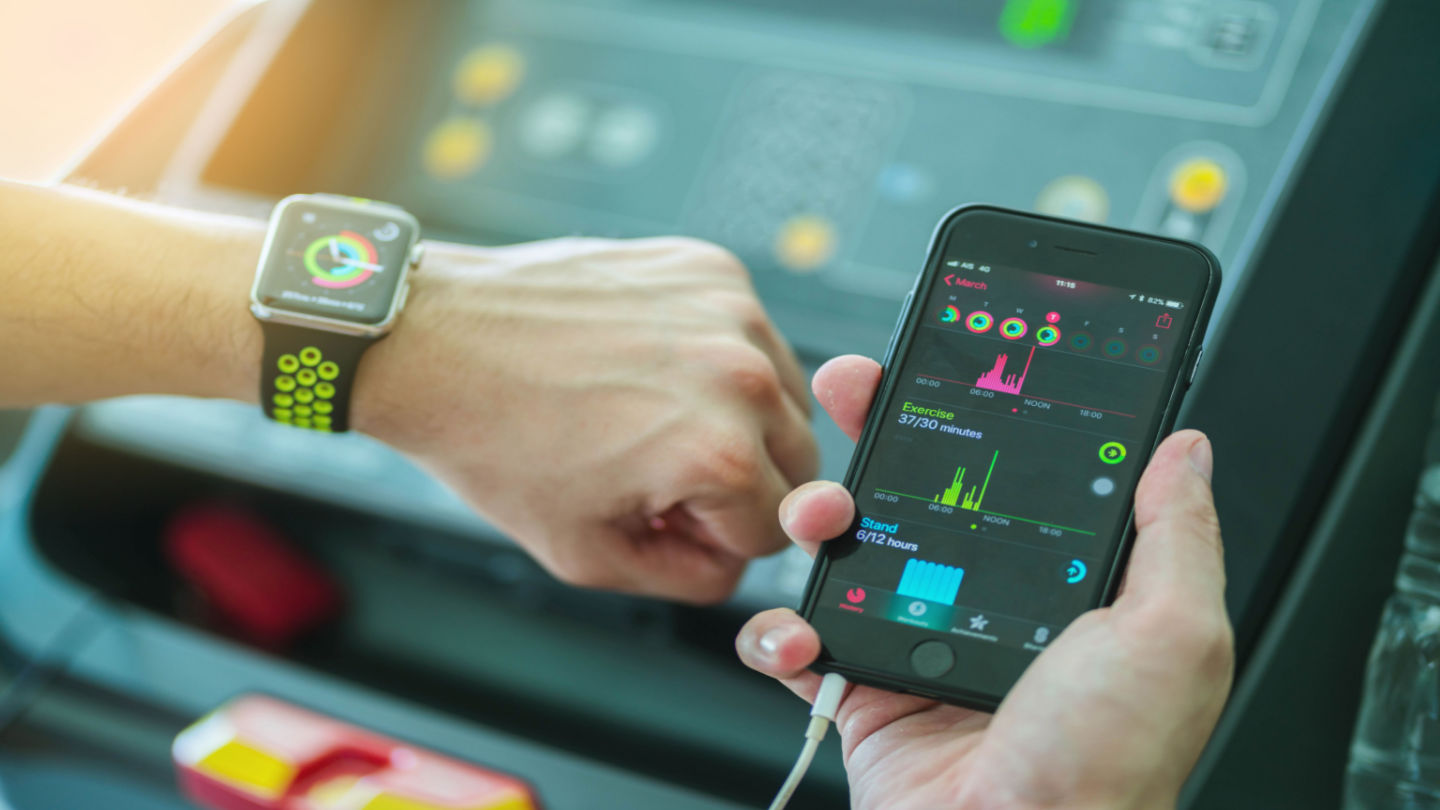
In the digital world, mobile apps have engaged communities in real-time with other users. From in-app chat, voice to video in your app, live streaming events, retailing to telemedicine, and tracking health and fitness, various mobile companies are facilitating consumers and businesses to interact and perform their personal and professional tasks. With the growth of mobile traffic, android app development services have developed various user-friendly mobile applications that have attractive interfaces and easy-to-use functions. The visually appealing app designs and interface entice mobile users to build a positive experience with the app.
The market survey performed by Interaction Design Foundation, an online community that conducts UX Design Courses for industry experts stated that the latest statistics mentioned that smartphone app users globally have reached 6.6 billion in 2022-23. An average of 76% of the users have increased in developed countries including the EU, US, Australia, South Korea, and Japan. Consequently, internet traffic from smartphones is growing eventually.
Whether you are a growing business or a top-rated brand, you can rapidly reach more customers at your fingertips or boost your brand identity in the global mobile marketing by employing user-friendly mobile applications. Among other mobile apps, wearable apps have become the newest technology for both Android and iPhone users.
Reading this informative blog will help you know the significance of wearable tech for customers. What are the wearable trends most preferred by users, their existing needs changing future trends? Moreover, the blog briefly provides an overview of wearable devices existing in the market. The app users will come to know about the features and functions of wearable devices. Learning the advantages of wearable apps allow consumers and businesses to build interactive user experience with the app. The concluding part provides a preview of the advancements in wearable technology and its implications on app users, businesses, and stakeholders.
Connect to the World with the Latest Wearable Tech

According to Stanford-HCI Research, next-generation innovative businesses have developed amazing high-tech wearable Apps for Android and iOS. From fitness to fashion, it’s all on your wrist! The device comprises smartwatches, wristbands, augmented reality glasses, earphones, and rings that keep you connected with the world. Consumer-grade wearable devices are worn on the body effectively monitor their health and fitness, and check their heart rate or sleep patterns. Moreover, the wearable devices also function as a digital wallet. They store the user’s payment information and help consumers to make secure and quick online payments.
Since wearable devices have become increasingly popular among consumers, various mobile apps for wearable devices have been introduced in the market. Along with fitness trackers, and health monitors, some other wearable gadgets help users to check the time or answer calls. Wearable speech-to-text recorders help users to take notes or record important messages. The wristbands and rings help in biometric authentication, fingerprint, or face recognition. So, wearable app users find these devices useful to fulfill their daily activities.
By tapping their wrist, the business can monitor their daily business operations. For instance, wearable technology helps managers and teams to have smooth interactions. The device improves internal communication within the workplace. Using different devices, the team stay gets connected, conveys updated information, and tracks their project output. The wristband having sensors sends raid alerts to the employees in case of mishap. Consequently, wearable tools help companies connect with other enterprises for support and take precautionary measures to avoid business risks and losses.
Wearable technology has helped maintain the data privacy and security of consumers. The companies produce modern gadgets that are secure by design and safeguard customer data. The devices are integrated with automated databases involving AI technologies. AI and machine learning tools incorporated with wearable technology help protect sensitive data. Many wearable devices have settings that allow users to control, and store significant data. The app users should review the settings and adjust them accordingly. Therefore, when customers purchase a wearable device, they should look for apps that use end-to-end encryption to protect their complex data.
Another importance of using these wearables is to create a positive and cordial workplace environment. Employing different wearables boost employees’ satisfaction at the workplace. Teams work comfortably, keep track of their ongoing tasks and manage their future goals. The productivity apps allow managers and employees to maximize their productivity and work efficiency.
Consumers’ life has become better with smart wear. The numerous benefits allow consumers to track their health and fitness, execute their exercise routines, and monitor their heart rate and sleeping patterns effectually. Thus, wearable technology provides personalized app experiences to users that help meet their specific needs and preferences.
Mobile Apps Integrated with Wearable Devices Allow Companies Know their User Persona

As companies know about consumers existing trends and requirements, they can create better wearable devices that are beneficial in monitoring their fitness, blood pressure tracking, hearing aids, and smart clothing devices that regularly observe the user’s physical condition. Smart shirts provide pulse rate and monitor body temperature, heart rhythm, and physical movement. The data is transmitted via Bluetooth to the wearable apps in real-time which offer app users a level of personalization that improve their lifestyles and needs. To provide the best user app experiences, business mobile app development services get to engage with broad market research Significant demographic information, interests, and behaviors let companies gain insights into existing market trends and customers’ needs and preferences. For instance, what category of wearables customers mostly use, where and how they would wear, and the challenges they might face in using the wearable device. Knowing the buyer’s personas will help wearable app development companies to create innovative wearables devices integrated with AI, machine learning, AR/VR technology, and 3D data visualizations that provide amazing experiences to the users. Analyzing customers’ perspectives about using numerous kinds of wearable apps helps create relevant devices that involve innovation and meet the growing needs, preferences, and trends of consumers.
Wearable tech: The Smart Wear Features elevates your lifestyle and create a bigger impact on business
1- Smart glasses help in the navigation of a location
Wearable devices comprising spectacles allow users to navigate any location or area. Using the device, people can get relevant information, they can record videos, and take pictures of the area they are searching online.
2- Observing Biometric Data
Modern wearables comprising smartwatches, fitness trackers, smart rings, or smart earbuds have the significant feature of tracking biometric data. The device record the user’s biometric data related to high calories or monitor sleeping habits. Once the device records enough data, it provides essential information to the users to meet their health goals.
3- Identifying Changes in Data
The cutting-edge wearable technology keeps users alert regarding any sudden changes in data. It could be sudden changes in heart rate or an increase in heart rhythm and pulse that may increase blood pressure or cause atrial blockage. A series of heart condition can increase the risk of stroke and leads to serious heart complications. To restore a normal heartbeat, heart patients are suggested to use a wearable defibrillator that keeps monitoring the heart pulse. Moreover, the wearable device helps track heart diseases and other mental health diseases.
4- Wearable Technologies have high glance ability
It signifies that fitness trackers such as smartwatches monitor the health-related activities of the users. Having enough glance ability, wearable devices are more focused on providing helpful information when required. The devices have simple and engaging interfaces along with readable fonts that enable the users to grasp the content easily. Build-in device sensors recognize the user’s context and adjust the content fonts accordingly. Consequently, the device ensures that users get updated information employing their wearables.
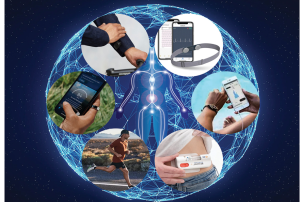
5- Logistics management
Wearable tools help the staff including experts, engineers, and technicians to acquire essential information about the wearable equipment they use to handle logistics, supply chain, and other business operations. Having modern gadgets, professionals can maintain visual data in real-time, and track their productivity while working on challenging projects. They use ring scanners and smart glasses to converse important details with offsite technical experts related to project management.
6- Smart wearables ensure the safety management of the workers
According to a survey, voice command solutions have helped increase factory logistics warehouse productivity by up to 30 percent. Workforces from industrial facilities use wearable equipment to gain important safety information to deal with emergencies. The safety features in wearables keep employees and supervisors informed about the calamity, how to manage rapid emergency evacuation, prevent injuries and boost the worker’s physical health.
7- Personalization in Wearables
Employing wearable devices provides significant information and guidance regarding the user’s health and well-being. If you are using a fitness watch to track your heart pulses, the equipment will keep monitoring your health conditions. They send personalized alerts to avoid health risks. Many users are fond of using Apple Watches. The attractive and appealing UX design and interface of the devices give a personal touch and help build a personalized relationship with the wearable devices.
The Constraints and Limitations Wearable App Users Experience
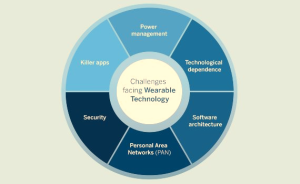
- The device requires frequent charging
It signifies that the device’s battery is fairly short, narrow, and drains quickly. For instance, the device battery of advanced wearables such as the Apple Watch may last for a day, while the Google Glass battery can smoothly work for 1.5-2 hours. However, many users continue to face the battery issue. They have to frequently charge the device which causes inconveniences and irritates many users. Furthermore, excessive charging hurt the device’s battery life. To manage battery issues, mobile app enterprise generate portable, convenient, and high-performing devices having lifelong batteries.
- A mini user interface of the device
Another hindrance the wearable users find is the small screen size of the device. A mini-size interface causes trouble for the users in reading the content. If customers feel dissatisfied, they might stop using the device. To retain customers, app developers should create a minimalistic and attractive UX/UI interface. Wearable devices must be integrated with aesthetic designs, illustrations, graphic elements, and technological compatibility that makes the wearable apps appear to be striking and friendlier for the users. Moreover, a normal-sized device with readable fonts makes the content clear and legible to the readers and increases their interest to explore the device comprehensively.
- High cost of the device
Different wearable models have different levels of complexity and functionalities that influence the level prices of the device. For instance, the fitness app having intuitive designs with engaging functions have high labor and infrastructure cost that increase the development cost. Moreover, developers use open-source tools for expensive commercial equipment that also upsurge the cost of creating and designing wearable devices. Therefore, the high price of the device also prevents users from buying high-quality wearable devices.
- The wearable apps do not perform well on multiple platforms
The users usually look for wearable apps that run faultlessly on different devices such as Android and IOS. To have smooth interconnectivity, the users employ tethered devices such as Bluetooth connections. The wireless network helps wearable apps to perform efficiently on multiple platforms.
Advancements in Wearable Technology: Meet Future Expectations of Businesses and the masses
The future is on your wrist; you have numerous options to use wearables to perform your daily tasks. From smartwatches to fitness trackers, smart glasses, headsets, and sensory clothing, wearable devices take users to the next level. The next section of the article provides significant knowledge of upcoming wearable technologies and their benefits for users.

1. Assimilation of renewable energy sources into wearable tech
The energy sources integrated with wearable apparatus will assist the users with solar charging, producing body heat and motion. Today, users spent hours charging their wearable devices. Shortly, big corporate firms will plan to generate wearable gadgets that may be easily charged through solar energy. They will get quickly charged during the daytime.
2. Wearable technology devices assist health professionals to perform remote patient monitoring
The healthcare industry has been transformed by wearable technology. Since wearable technology has grown more advanced, health experts have integrated diagnostic potential apps into wearable devices. The devices having sensor accuracy determine the correct diagnosis. Using the clinical app also enables the health experts to analyze the patient’s clinical information, learn about the physical examination, and which diagnostic tests are required to be performed. Consequently, designing new medical components in wearables comprising glucose monitoring devices, pacemakers, and heart rate monitors effectively monitors the patient’s recovery after surgery. In addition to enhancing patient monitoring through wearable devices, healthcare providers can also gather valuable patient insights and feedback using specialized survey software. This allows them to better understand patient experiences, improve the usability of wearable technology, and tailor their services to meet patient needs more effectively
3. Smartwatches combining web apps perform multifaceted tasks
The users swiping their smart wristwatches can make quick online bookings and reservations of metro cab or book flights or make online table reservations at a restaurant. The smartwatches having built-in online payment apps allow users to make secure and quick payments. By sharing their gadgets with other users, consumers have easy access to make payments via using smartwatches.
The mobile wallet app integrated into smartwatches helps customers to transfer online money to a mobile wallet. The users are required to link their accounts to the digital wallet. Instead of using ATM or business card to make payments, consumers can pay with their smartwatch.
4. Apple’s Approach to Wearable Devices
Consumers also make purchases using Apple Pay in shops, restaurants, and on online retailers’ sites. Apple Pay offers users an easy, secure method to make payments through their Apple Watch. The users are required to set up Apple Pay in the Apple Watch app on their smartphone. Once the card gets stored in the Wallet app on their iPhone, the users can add the card to their Apple Watch. Following this procedure, consumers can now proceed towards making online secure payments. The users can add their credit, debit, and prepaid cards to the wallet apps to make contactless payments and transact person-to-person payments.
Apple Watch offers a smooth navigation of shopping malls or online retailer sites. The users tap the wearable screen and enter an online store or shopping cart to explore various products. The users get essential product information and knowledge of product discounts at the time of making purchases.
As customers fill their carts with the products, they use transit cards to make payments. The cashier enters the total that gets appeared on the wearable. The customers also have alternative sources of payment, i.e. interaction between other devices. Once, the location is selected and the users make payment, a receipt is sent to Apple’s ‘wallet that offers payment confirmation.
5. Diagnose EEG brain waves
The app developers have generated Headband, an advanced wearable device that will help users to identify brain wave patterns. Modern health device incorporating AI technology consists of sensors that monitor biological data. The users will detect their EEG brain waves and send commands to the brain to perform automated tasks. The devices having augmented reality will help perform a variety of health tasks without physical intervention.
6. App gamification integrated into wearable devices
Many users have set their fitness goals but are unable to attain them. They look for apps that boost their motivation and help them stay consistent in reaching fitness resolutions. The gaming apps provide entertainment to the users in the form of interesting game, playing puzzles, and entertaining AR games. For instance, the fitness apps comprising Plaicise, Galaxy Fit, and Zombies Run provide an immersive experience to runners.
Recapitulate
Wearable technology has seen a steady growth in recent years. From tracking fitness activity to monitoring the serious health conditions of patients, wearable devices in form of smartwatches, fitness trackers, smart glasses, and headset help customers to fulfill a variety of tasks. The app developers have integrated mobile apps into wearable devices that track physical and health-related activities. The device monitors biometric data, check periodic electric pulses, and provide valuable suggestion to improve physical fitness. Furthermore, the device impact user experience by providing online shopping experiences and making secure digital payments. Moreover, wearable devices are helpful for businesses in boosting employee productivity and improving management activities. Thus, the innovative applications for wearable devices have boost fitness and health, upsurge business efficiency, and influence user experience.
- August 3, 2023
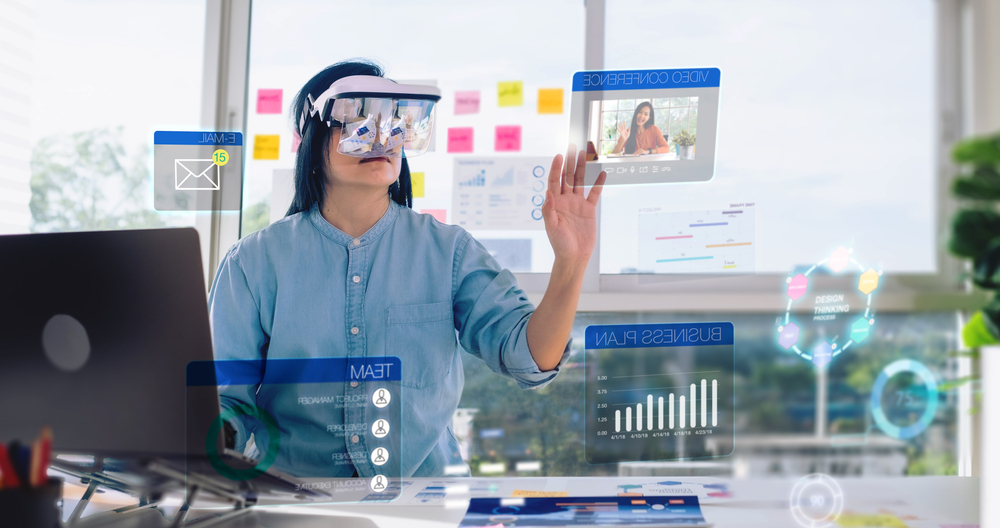
Wearables have been a major part of our life and a significant digital change for a long time now. It is as of now not simply a niche market, yet rather a quickly developing industry that is impacting how we communicate with our gadgets. Mobile applications have taken this comfort to a higher level by giving users the capacity to control their wearable gadgets from their cell phones. This component has become progressively famous as users can now control their wearable gadgets without taking them off or intruding on their exercises.
In recent years, the Internet of Things (IoT) has gained popularity, and wearable technologies are no exception. Wearable device mobile apps are now combining with Internet of Things (IoT) devices to offer users a seamless experience. For instance, wearable gadgets can now use smartphone apps to manage smart home appliances. Users now find wearable gadgets more appealing because they can control various devices right from their wrists.
The Impact of Artificial Intelligence in Enhancing Wearable Mobile Apps
Enhanced User Experience
Wearable device users now have access to a level of personalization and customization that was previously impossible. Mobile apps provide customers with a variety of customization choices that let them personalize their wearable app development technology to suit their own requirements and tastes. Because users can now customize their devices to meet their requirements and lifestyles, wearable technology has become more appealing to them. Tracking one’s fitness and health is a common use for wearable technology.
Wearables can recognize and react to the user’s context, such as location, time of day, and activity, with the help of AI. This increases the app’s functionality by enabling it to provide pertinent information and services.
Also Read: Augmented Reality And Virtual Reality In Wearable Mobile App Development
Improved Health And Fitness Tracking
Growing numbers of people are utilizing wearables to track their fitness levels, which has made personal fitness tracking increasingly popular. Users can establish objectives, measure their progress, and receive individualized feedback on their fitness performance via wearables.
The purpose of wearable medical devices, which are worn on the body to monitor and collect health-related data, is to help patients and their healthcare team better understand their health state and decide what treatments would work best for them. These capabilities are further improved by the incorporation of wearable technology with AI and ML.
Today, you can use wireless, noise-canceling headphones to listen to your favorite music and wirelessly cast a virtual trainer on your smart TV. The way you work out will also alter as virtual coaching and AI become more prevalent. Numerous social fitness applications exist that can make working out with a group activity. Numerous applications offer challenges, incentives, and community assistance to make training fun and keep you motivated.
Intelligent Sleep Monitoring
Instead of people coming to a lab, researchers can monitor a person’s sleep quality over a long period using a radio-emitting, artificial intelligence (AI)-enabled gadget and an algorithm that decodes those signals.
Applications for improving sleep quality powered by AI are made to assist users in setting up ideal sleeping conditions and establishing sound sleep routines. White noise makers, guided meditation apps, and sleep coaching services are some examples of these applications. These applications’ AI algorithms analyze user information and preferences to tailor content to each user’s particular requirements.
Smart lighting aids in establishing the ideal environment for rest and sleep. You can dim the lights to the ideal level or turn them off without getting out of bed. A restful night’s sleep may be aided by listening to soothing music or background noises.
Seamless Integration With Virtual Assistants
AI in speech recognition is used for more than just voice-to-text conversion. A more personalized and natural user experience can be delivered by using advanced AI algorithms to evaluate the context, tone, and emotion in the user’s speech. For instance, based on a user’s speech, AI may determine whether they are worried and change the device’s response appropriately. This degree of sophistication is a game-changer, especially for wearable fitness and health gadgets that can now offer individualized health recommendations based on the user’s voice and real-time feedback.
Siri and Google Assistant are two of the most well-known virtual assistants on the market. Both of these voice assistants powered by AI can assist you with tasks, provide information, and manage different home appliances. The two, however, have some significant distinctions that may make one more appealing to you than the other. To aid you in selecting the best voice assistant for you, we’ll compare Siri vs Google Assistant in this blog post.
The rapid advancement of information and communication technology has given rise to a new kind of human-computer interaction, which has been sparked by wearable technologies. With the use of this technology, users may move around more easily and stay connected so they can easily access internet information and stay in touch with others.
Predictive Analytics For Health Link Assessment
Medical Professionals utilize machine learning as a tool to care for patients and manage clinical data. It is an example of artificial intelligence in action, where computers are programmed to think and learn in similar ways to people. This can be used in the healthcare industry to gather and manage patient data, spot trends in healthcare, suggest therapies, and more.
AI will radically alter how medicine and healthcare are provided: Machine learning can be used to assess diagnostic patient data, such as that from ECG, EEG, or X-ray pictures so that diseases can be identified at an extremely early stage based on tiny changes. The technical difficulty of implanting AI within the human body still exists. Researchers have finally succeeded in creating an implanted AI platform that can distinguish between normal and abnormal patterns in biological data like heartbeats in real-time.
In order to lighten the strain on healthcare providers and eventually reduce their costs, AI can be used to automate administrative duties including pre-authorizing insurance, tracking down outstanding invoices, and preserving records.
Real-Time Emotion And Stress Analysis
To assess sentiment and emotions, AI can examine user interactions and behavior. With the help of this data, the app’s replies and contents can be modified to improve users’ empathy and emotional intelligence.
There are many ways to identify stress levels:
- Biometric data analysis: Physiological data can be gathered by wearable devices having biometric sensors, such as heart rate monitors and skin conductance sensors. These data can be analyzed by AI systems to look for patterns indicating stress, including elevated heart rate or alterations in skin conductance.
- Activity and behavior tracking: Wearable tech or smartphone apps that monitor a person’s daily activities and habits can collect data that AI can analyze. Stress might be indicated by changes in activity levels, sleep patterns, or social interactions.
- Smart interventions: Based on the recognized stress levels and triggers, AI can offer tailored recommendations or treatments. This can entail recommending stress-reduction activities, mindfulness exercises, or relaxation techniques.
You can manage stress by:
- Detecting early warnings and indications of a major disaster
- AI Chatbots for Therapeutic Purposes
- Creating a conducive environment
Smart Home Integration For Convinience
Wearables’ seamless control of smart home appliances is a practical and effective approach to overseeing and communicating with your connected home’s gadgets. Smartwatches and other wearables can act as a convenient remote control for a variety of smart home devices.
An effective impact of artificial intelligence that can improve user experiences across a range of devices and platforms is the automated adjusting of settings depending on user preferences and behavior. AI may automatically change settings to match individual preferences by examining user data and behavior patterns, enhancing and streamlining the user experience.
In a variety of domains, AI has the potential to improve comfort, energy efficiency, and security, making our lives more convenient, sustainable, and secure:
- Smart home automation: By adjusting temperature, lighting, sustainable and secure.
- Security and surveillance: By analyzing video feeds, detect unusual activities.
- Energy management and optimization: Operation of appliances and devices to reduce energy.
Context-Aware Safety Features
A system called fall detection technology video analytics and machine perception to identify people who are falling. It was created specifically for those with illnesses or disabilities, sending out fast alerts to authorized persons so they could respond right away.
Online tracking and analysis of human physiological and pathological data is done by health monitoring systems (HMSs), ideally in real-time. These systems’ main function in data analysis is to take low-level biosensor data and turn it into high-level, relevant knowledge.
Through the use of sensors, HMS continuously gathers data on human health factors, enabling online and real-time analysis of an individual’s present state of health. Therefore, early detection of emergent symptoms and disease prediction are two of the primary advantages of HMS over conventional healthcare methods. Apps for mobile devices can use cellular signal technologies and services like GPS to pinpoint a user’s location.
In the heart of this technological synergy lies AI’s voice, orchestrating a symphony of insights and responses that mirror the user’s rhythm. This harmonious blend of wearable technology and AI voice creates a tapestry of personalized experiences, ensuring that every interaction is as individual as the user themselves.
Enhances Data And Security
- Secure Communication: To safeguard data during transmission between users or systems, artificial intelligence (AI) can be utilized to create strong encryption methods and secure communication channels. AI algorithms can assist in creating effective, attack-resistant encryption methods.
- Data Access and Control: AI can aid in the development of intelligent access control systems that specify who has access to what data and under what circumstances. This may aid in preventing unwanted access to private data.
- Predictive Analytics for Threat Detection: AI can aid in the development of intelligent access control systems that specify who has access to what data and under what circumstances. This may aid in preventing unwanted access to private data.
Secure User Authentication Through Biometrics And Facial Recognition
Based on distinctive biological characteristics like fingerprints, facial features, and speech patterns, biometric authentication is a highly secure and trustworthy type of authentication. However, despite being more trustworthy and secure than conventional password-based techniques, biometric authentication is not completely reliable.
In order to ensure that data is completely protected from unauthorized access and use, malware, and other cybersecurity threats, data compliance is a process that defines the applicable governance for data protection, security, storage, and other operations. It also develops policies, processes, and protocols.
Wearable technology and remote monitoring systems with AI capabilities can continuously gather and evaluate patient data. Vital signs, exercise levels, and other health data can all be tracked by these devices.
- Improved User Experience: Personalization AI systems may examine user preferences and behavior to offer recommendations and material that are specifically tailored to each user, improving the overall user experience.
- Health Monitoring: Wearable Technology AI is able to analyze data from wearable gadgets like smartwatches and fitness trackers to keep track of users’ heart rates, sleep cycles, and physical activity levels.
- Convenience: Smart Home Automation AI-driven smart home systems may learn user preferences and behaviors to automate tasks like managing household appliances, regulating the temperature, and controlling lights. This improves convenience and energy efficiency.
- Security: AI that protects privacy AI can be utilized to create privacy-enhancing solutions that enable data analysis without jeopardizing personal information.
Future developments and advances in AI have enormous and fascinating promise. AI is anticipated to play a significant role in revolutionizing a variety of businesses and facets of our life as technology continues to advance.

